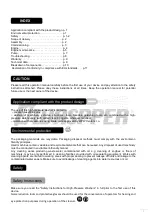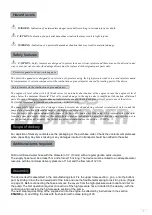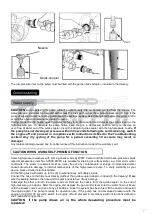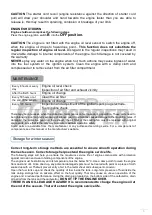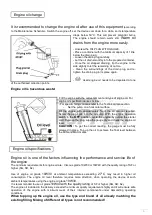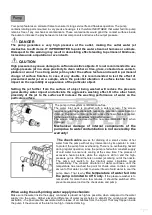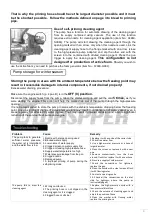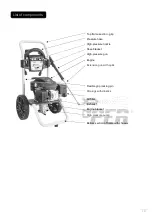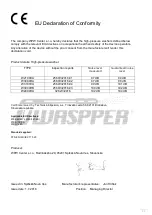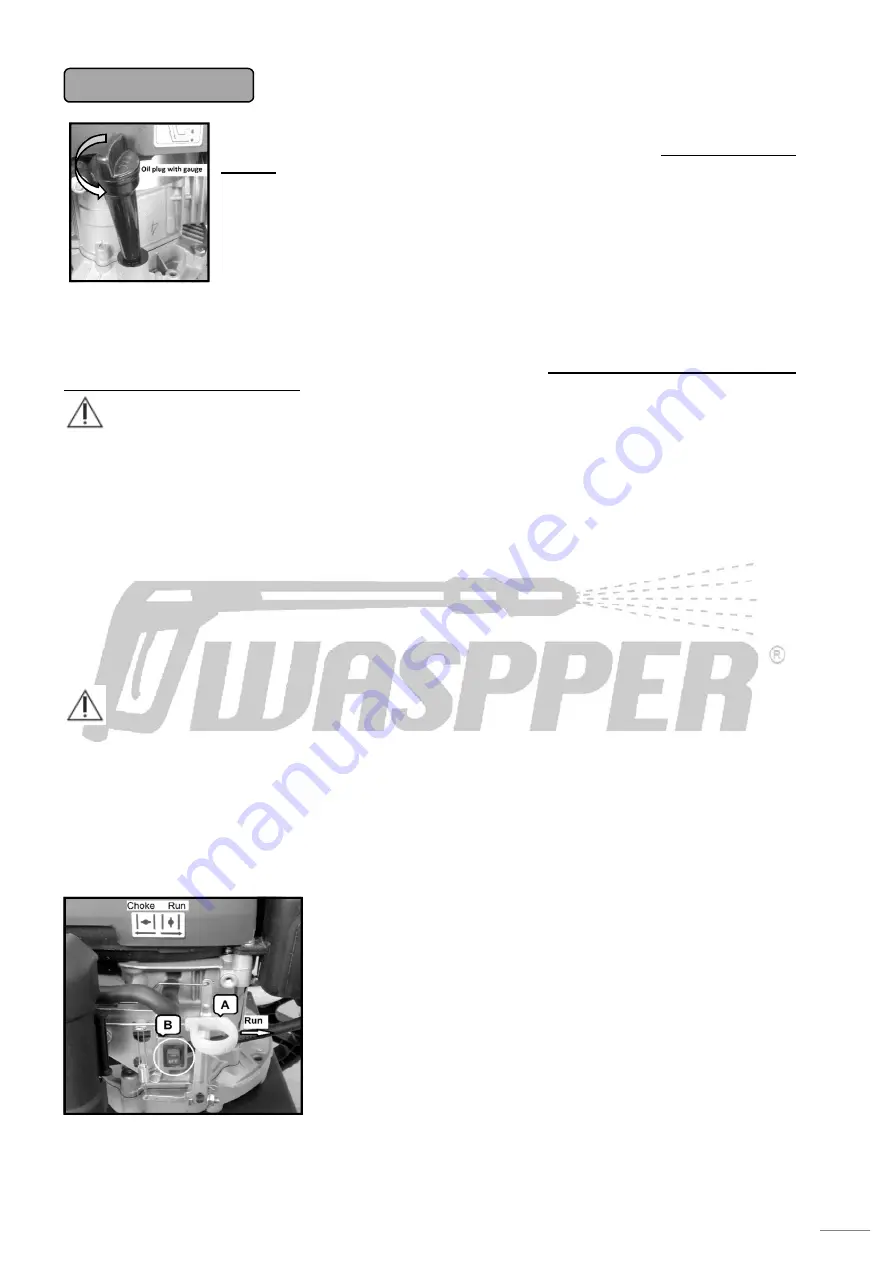
4
Engine
The engine
MUST
be filled with the correct amount of engine oil supplied with the
delivery before its first commissioning. The bottle with engine oil
may contain larger
amount
than required for the particular engine type. For specifics refer to the
Technical data section.
Set the pump on a horizontal surface. Open the oil sump plug, also fitted with the oil
gauge. Fill the engine with approximately
¾
of the oil amount required. Screw the plug
back into the oil sump. With the
B
switch se to the
OFF
position (see the figure
below), cycle the engine by pulling the starter cord. Remove the plug, wipe the gauge
dry and check the engine oil level.
CAUTION:
To get the correct reading, the gauge must be fully screwed in place. Top
up the oil to achieve the final level between the MIN and MAX marks.
Remove the plug and fill the tank with petrol carefully. To ensure full performance of the engine, use fresh
petrol with the octane rating of 91 or higher. The physical properties of old and vapid petrol are different and it
may cause an uneven run of the engine or reduced pump performance.
Use clean and oil-free petrol only -
your engine is a four-stroke type.
DANGER
When in operation, the engine produces carbon monoxide, which is a colourless and
odourless poisonous gas. Inhalation of carbon monoxide may cause nausea,
headaches, dizziness, vomiting or even death!
The device may be used outdoors only, with proper ventilation ensured. It is also
necessary to prevent ingress of exhaust gases into enclosed rooms via unsealed
openings.
When working with the engine on, turn the device in such direction, where the
exhaust does not remain pointed at persons standing in the vicinity or any opening
in nearby structures (garages, galleries, cellars, etc.).
When in operation, the engine produces waste heat, resulting in heat-up of various
engine components (exhaust, engine cylinder), which may cause serious burns.
These components may cause fire, when in contact with flammable materials.
DANGER
Petrol fumes are extremely flammable and explosive substances that max cause
burns, fire or even explosion, when handled improperly.
Let the engine cool down for 5 minutes before adding petrol into the tank. Then
proceed with careful removal of the tank lid and start pouring the petrol in with
caution. NEVER fill the fuel up to the rim, since petrol warms up during engine
operation and swells, which may result in leakage through the lid and subsequent
explosion of fire. NEVER tip the high-pressure device into such position, where
petrol may leak from the tank.
NEVER attempt to start the engine with damaged
components in the fuel supply, ignition or safety
features.
Press the engine switch
B
into the
ON (I) position.
Shift the
choke control lever
A
into the
CHOKE
position (forward and towards
the air filter)
Grasp the pump grip with one hand firmly and use the other hand to hold
the starter cord grip.
Pull the starter cord to the point, where you feel resistance from the
engine. Then pull the grip sharply to prevent recoil. If the engine fails to
start on the first attempt, depress the gun and relieve the water pressure
in a safe direction. Then repeat the starting process by pull the starter grip again.


